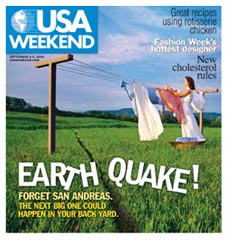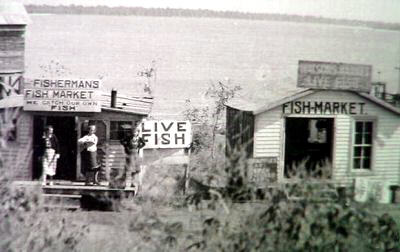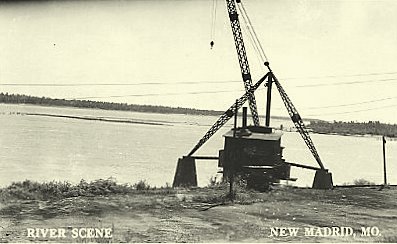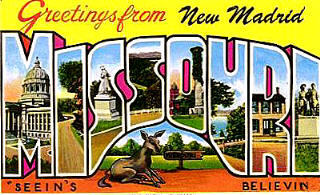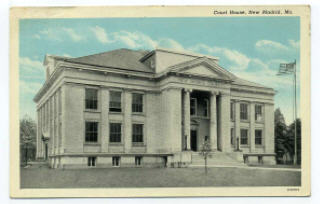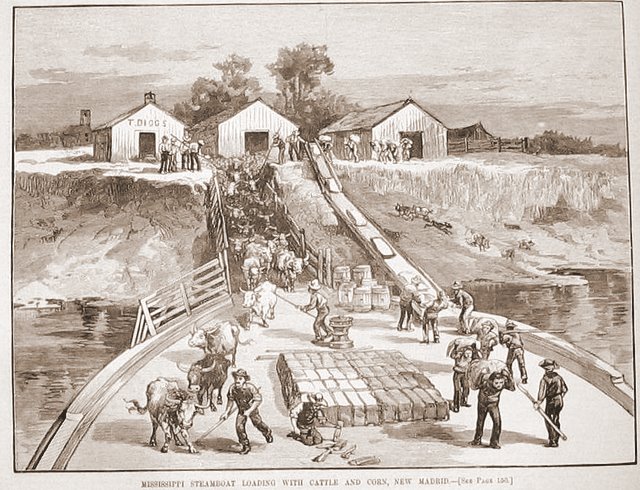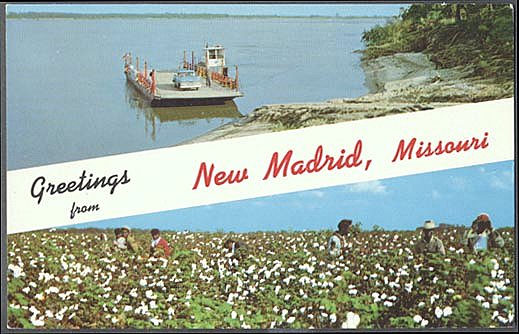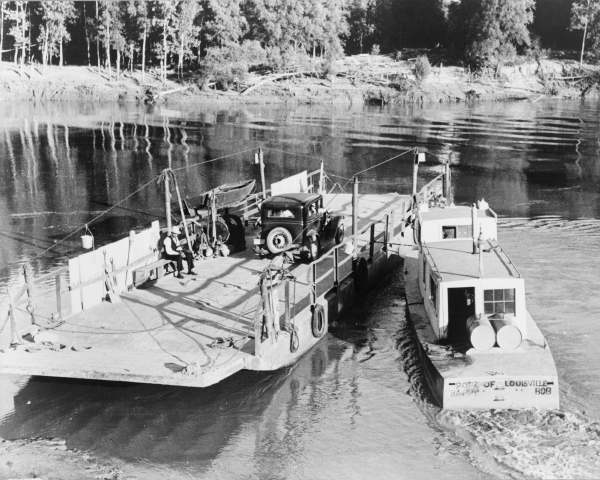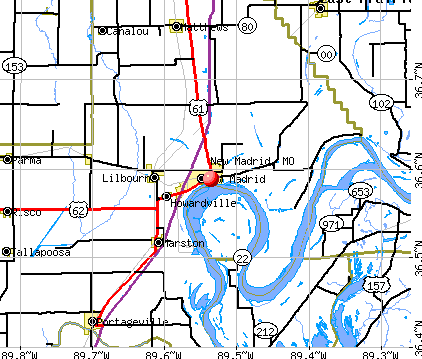New Madrid Seismic Zone
The New Madrid Seismic Zone extends from Cairo Illinois to near Memphis. Little shakes happen about every day. It has a history of shaking violently about every 500 years. There is evidence the big shakes go WAY back.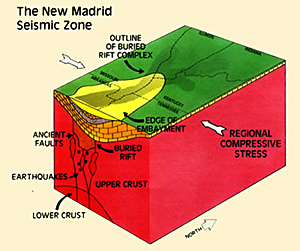 Violent shaking in 1811-12 meant folks especially in river bottom areas, from Buffalo, NY, to the Carolinas, awoke with a feeling like being on a rough ocean, and seeing the doors and hanging lamps silently sway.
Violent shaking in 1811-12 meant folks especially in river bottom areas, from Buffalo, NY, to the Carolinas, awoke with a feeling like being on a rough ocean, and seeing the doors and hanging lamps silently sway.So will it, or won't it happen again in a big way? A handful of scientists are trying to prove the fault is dying. And faults DO die. Little shakes, mostly below magnitude 3, -- the locals treat as a passing train or thunderstorm.
The fault is all underground here: no permanently visible scars on the surface. What makes it harder to predict is this location is in the MIDDLE of a tectonic plate, which is different than two plates scraping together. This was the west edge of the country in 1811-12. If the same thing happened again, we might be burying thousands and our economic and transportation system would take decades to fully recover.
Before Hurricane Katrina hit New Orleans, this website was getting 30+ hits a day. After Katrina, it has increased a bit with each big quake episode in the news. .A typical weekday brings a few hundred... with 16,000 - 20,000 curious visitors in one day just after a big quake somewhere in the world.
Status of "New Madrid Fault" - Will it or won't it (shake violently, soon)?
No one can say for sure. If you see another news report that it is dying, take it with a grain of salt. Make some preparations and give thought how you would fare for at LEAST three days in your own house without utilities.
Iben Browning incident, unsolid sand
Climatologist?
Iben Browning based his 50-50 prediction of a major early-December 1990 New Madrid quake on peak gravitational pressure on the earth's crust from the moon and planets.
A 4.6 magnitude earthquake centered at New Hamburg, Mo., between Sikeston and Cape Girardeau, shook the region on September 26, 1990, directly on the Commerce Geophysical Lineament. No one tightly connected it with Browning's prediction, but it and the national media attention increased local folks' confusion as we headed into the predicted time. An expert analysis of 1992 found that a change in the barometric pressure or the river level could have just as much effect as Browning's concerns.
I am a former newsman who attempted to report on the hubbub. A popular Detroit radio celebrity put me on the air, three times, intent on laughing at the whole situation. I put a St. Louis University seismologist on the air saying the needles were quieter than usual during that time.
I visited downtown New Madrid on that Sunday afternoon when broadcast trucks from Detroit to Dallas were parked in the downtown area of the town, population 3,200. I counted 45 vehicles.

The parking and extra phone lines for the vehicles appeared to be very neatly planned. A sheriff's deputy minding the jail a block away wondered why CBS alone needed five large satellite trucks from different cities.
![]()
Levee hasn't broken yet
CNN was halfway up on the Mississippi River levee, beside the museum, reporting at least once an hour that a quake had not threatened the levee just yet!. All were in grave danger if a big one had really happened.
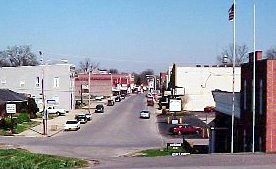 |
|
Downtown New Madrid from levee. |
The Missouri Governor decided the National Guard needed a practice run of setting up a mobile hospital at the Cape airport that very weekend, but insisted it had nothing to do with Browning's prediction.
10 years after Iben (National Geographic)
Retired biologist?
Climatologist? Why did the media think he, in the New Mexico desert, knew more than the seismologists? Perhaps he fooled some quasi-experts because he sounded very intelligent. Once the frenzy began, it fed itself. A Paducah KY newspaper wisely decided to ignore the mess.
skeptic | overview | NY TImes | Feldman on frenzy | day the earth stood still
The USGS will send you 250 pages about the Iben Browning aftermath, for free.
USGS CIRCULAR 1083 -- write to USGS Map Distribution, Box 25286, Building 810, Denver Federal Center, Denver, CO 80225
Iben died several months later. The person who "beat the drum" for him locally was David Stewart, a Cape Girardeau University Professor. The incident did heighten awareness of the fault zone.
Stewart left his job months later, wrote books and gave tours about the telltale signs of sand boils and such, which Bootheelians take for granted in their everyday lives. He is now into aroma therapy.
"It's like crying 'wolf'; We don't pay attention anymore" - local New Madrid newspaper editor on NMSZ seismicity.
